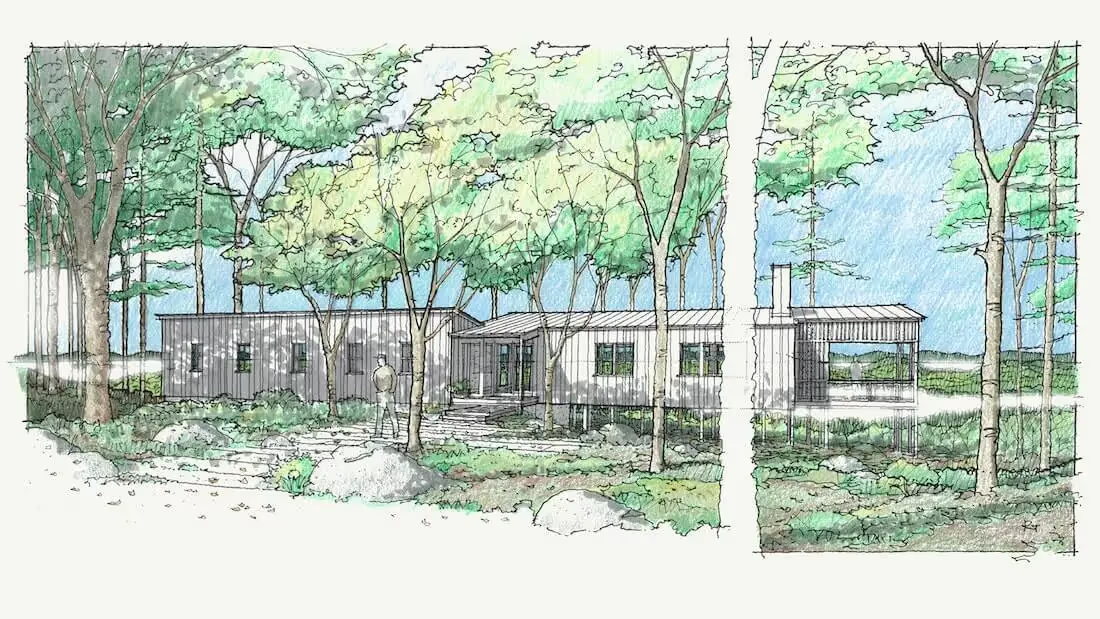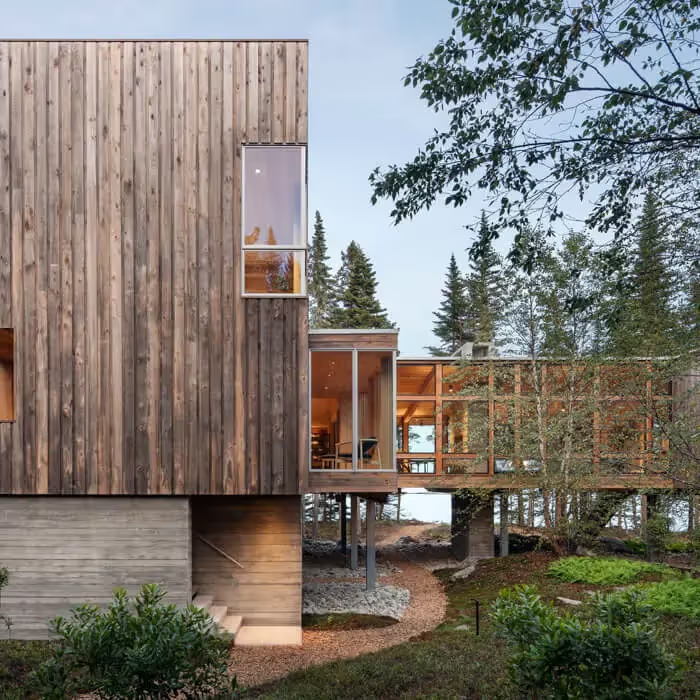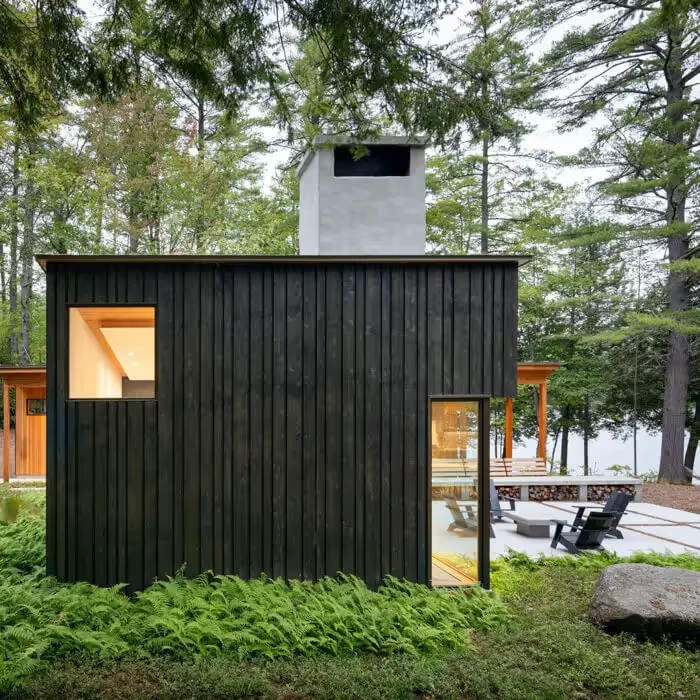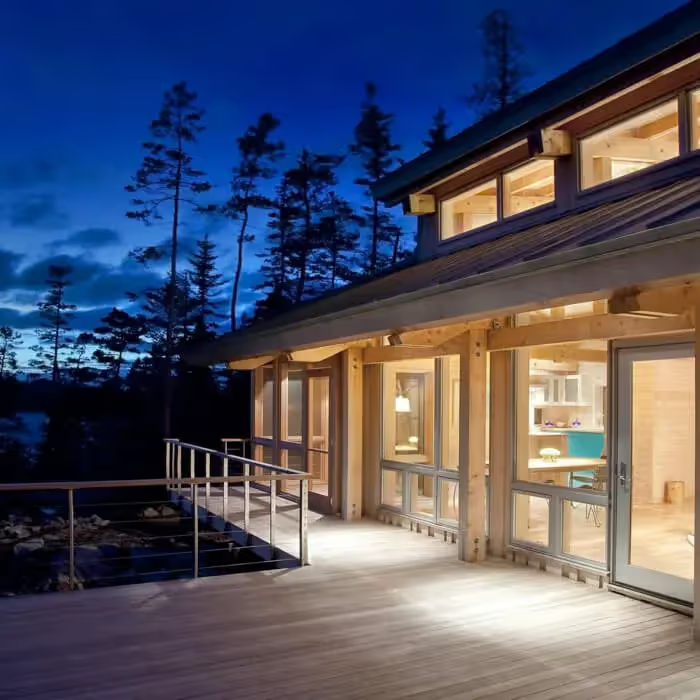Caterpillar Hill


In a coastal town made up of fishing villages, hidden harbors, and blueberry fields, our clients found a beautiful wooded site overlooking a handful of nearby islands.
Swimming in its lush landscape, the site is surrounded by woods, water, and rocks. As with all of our projects, the site drives our approach to the home, and this was no exception. In fact, 15 years before Caterpillar Hill came to life, one of its future homeowners stumbled upon the site due to nothing short of serendipity. In her words, “the orchestration of Penobscot Bay, Walker Pond, Castine, and Belfast Harbor all framed by the Camden Hills was a gift of nature.”
Our clients, a family of three, came to us looking for a full-time residence with accessibility and graceful longevity as top considerations. Maine memories were twofold for the homeowners, with childhood summers spent in nearby Castine and two decades of family travels to the neighboring town of Sargentville. Drawn to the state for its natural beauty and to the Blue Hill peninsula for its calming sense of community, they approached our team with the intention to build their forever home, a place for serene retirement after hectic professional careers in the city.
We designed the home to evoke the feeling of a treehouse that would stand the test of time. Our site-specific process carefully considered the dramatic grade change of the site, taking note of how best to balance the many variables of the site. When you enter the home you’re entering at grade, but by the time you’ve made it to the other side of the narrow building, you’re six to eight feet above grade. This, along with the thoughtful protection of trees and rocks close to the building, gives the home an of-the-woods atmosphere while providing easy and welcoming access on the entry side.
Looking up and out, the linear scheme of the home takes advantage of the stunning views while also providing a single-level floor plan that engages the site to the south and floats above it on piers to the north.
We faced a challenge in making the house feel light and airy, without over-complicating the design. It came down to being honest about the exposed structure. The posts below are only where they need to be, while the exposed beams in the living room wing are true beams that are needed to support the roof structure, providing a clear and open floor plan. We used this framework – success through simple forms – as a mindset and an organizing strategy throughout the project at large.
At arrival, the house is at-grade on one side and cantilevered on the other. A simple bar plan accentuates the site conditions, using the central entry area as a joint where the circulation switches sides of the building, a small yet crucial choice. This also separates the private, bedroom wing of the house from the public, living side. Throughout the living spaces, there’s an open airiness with lots of glass. Finding balance as you make your way toward the private areas of the home, the atmosphere changes pace with smaller openings for light, ventilation, and sweeping views. “Every window is a picture frame,” as the homeowners put it.
Given our team’s (and our clients’) loyalty to the site, it was important to us to implement specified local materials wherever possible, keeping the house true to its land. We used local Eastern white cedar for the exterior siding, and red birch for flooring and countertops throughout the interior. The structure doesn’t make a foreign statement in its surroundings, rather, it blends in as if it has always been there.
Project Completion Date: 2020
Photography:
Collaborators:
Builder: Jon D Woodward & Sons, Inc.
Engineering: Albert Putnam Associates
Interior Designer: Krista Stokes
Landscaping: Atlantic Landscape Construction
Related Press:



